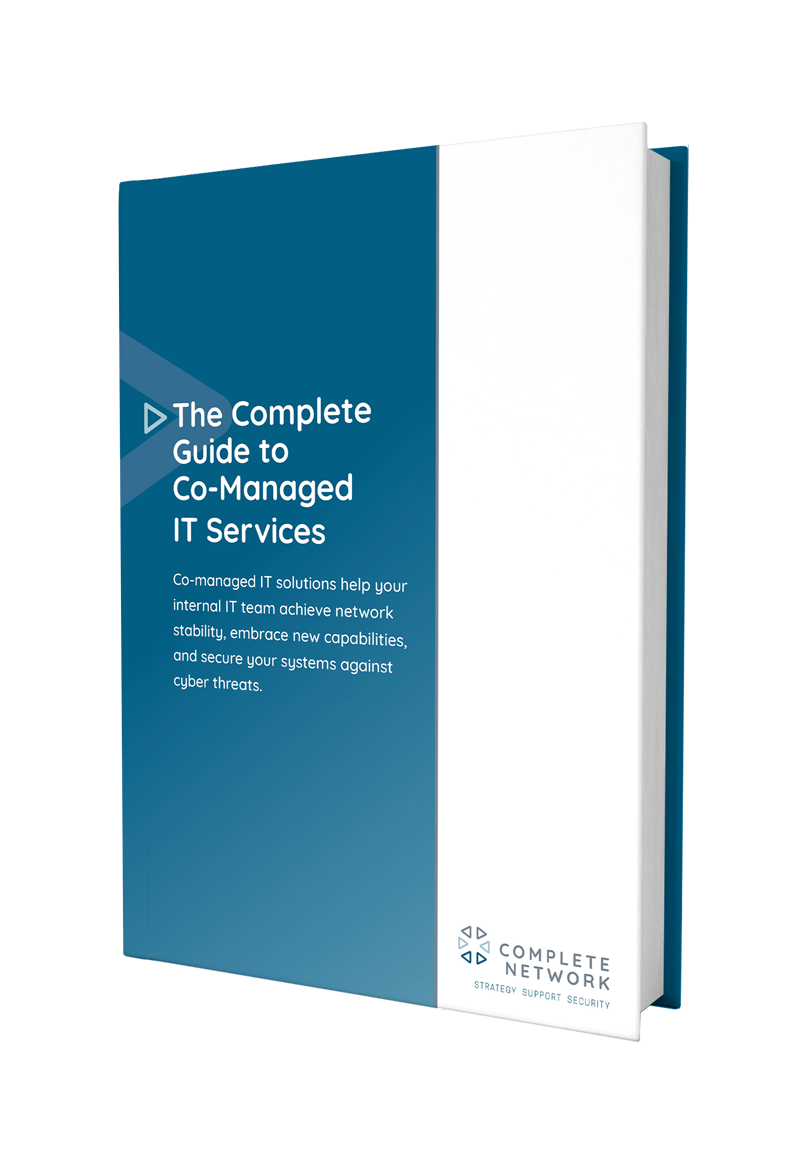Business Continuity (BC) is a way to ensure that your organization can withstand catastrophic disruption. A larger, more involved concept than a backup and disaster recovery (BDR) solution, BC plans provide redundancy and failover for each of your critical systems and business processes, helping to ensure a smooth and efficient transition to secondary systems when a serious issue emerges.
Once embraced only by financial institutions and mission-critical functions within government, the redundancy and preparedness that BC solutions provide have become an area of strategic importance for organizations of all sizes, as they grow more dependent on their digital technology and data.
The ideal managed IT services provider is a trusted partner who works closely with your team to bring your technology and business goals into alignment. This long-term, consultative role makes a qualified MSP well-suited to play a leading role in the design of a business continuity plan.
Working with a veteran MSP that has documented experience BC planning relieves your internal staff of a significant burden, while ensuring that the lifecycle of the BC plan is properly managed at every stage.
Below, we’ll look at the various ways that the MSP assists in the BC development process.
The business continuity plan (BCP) is a centralized document that details how each role and department will respond to unplanned network service disruption.
Having a plan that’s documented and accessible by each stakeholder in your organization is an important part of a business continuity strategy, as it helps clarify roles, expectations, and collaboration around the business continuity process.
Today’s network environments are far more complex than even just a decade ago, as they’re spread across SaaS applications, hybrid cloud environments, on-premise servers and workstations, mobile devices, and more.
The scoping phase is when the MSP will determine all the systems, people, and processes that are most critical to continuous operations, so they can select which systems to include in the business continuity planning. Also included in this phase are choosing the appropriate vendors for a business’s BC needs and drafting service-level agreements (SLAs) relating to the BC solution.
The scoping phase should be tailored to any organization’s regulatory compliance requirements and identify key personnel at each step of the business continuity process, establishing responsibilities and clear lines of communication
Without a careful scoping process, an organization is likely to waste both time and money planning.
The risk assessment is when the MSP identifies the risk most likely to affect your business, including fire, flood, storms and other natural disasters, terrorism, pandemic, or cyberattack.
The MSP will often employ a framework, such as the National Institute for Standards and Technology (NIST) Cybersecurity Framework, during the assessment. The NIST framework is a resource first developed by the U.S. Federal Government for developing comprehensive “risk-based security” strategies, which is now widely adopted by private businesses to help maximize the impact of a risk management strategy.
The next step of Business Impact Analysis (BIA) is a process in which the MSP’s team uses the information gathered during the risk assessment to measure how each of those events would affect your operations. This means analyzing not just the impact on the systems themselves, but also each of the dependencies for each of those business functions.
Running a comprehensive BIA analysis must cover all the ways that a business would be impacted by downtime events, including direct recovery costs, lost business, legal recovery fees, brand reputation and damage, human resources issues, new hardware costs, and others. By gathering this intelligence, the MSP and client can then work together to establish acceptable metrics for the recovery of each system.
Worth noting is that a BIA may even be required for organizations with certain regulatory compliance requirements, such as ISO 22301.
Once the MSP has drafted the final version of the BCP based on the information gathered in the first two steps, they’ll help your team implement and test the plan to ensure that each of the systems are meeting the required metrics.
The degree to which this test will involve real-world backup technologies, turning on redundant systems, and moving personnel to alternate work locations will depend on the needs of the organization.
Once the initial tests have been completed, the MSP’s team will design a schedule for ongoing BCP testing and maintenance. These important but often overlooked aspects of the business continuity process are crucial to maintaining an effective, efficient business continuity plan as your organization and technology evolve, while also ensuring that each of your objectives are met.
Not all MSPs have the skillsets and documented processes to provide reliable business continuity planning, especially at organizations with complex network environments. If your business in Albany, New York, Charlotte, North Carolina, or Bluffton, South Carolina wants to become resilient to disaster, we’d love to help.
Reach out any time 877 877 1840 or [email protected].
In an ideal world, technology would be a consistent source of competitive advantage and benefit for small and midsized businesses. The reality is that many fail to realize that confidence.
Without the right resources and support, even a highly skilled technology team can become overwhelmed by the growing list of technology management duties. When important tasks get neglected, it creates ripple effects throughout an organization that damage productivity and efficiency.
The co-managed IT services model solves these problems by providing your existing IT team with all the support and resources they need to successfully plan, manage, and defend your network technology.
This guide covers:
Download it for free by filling out the form here.
